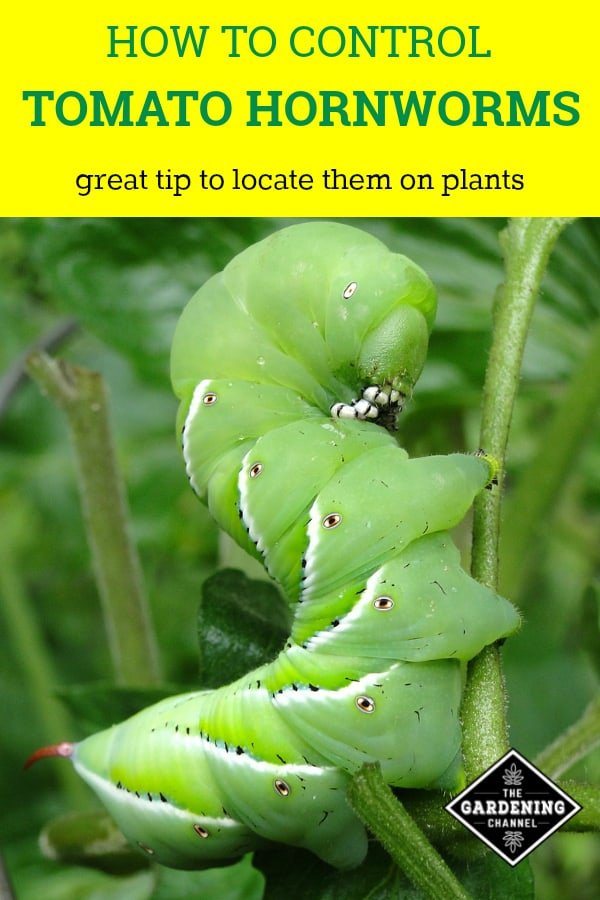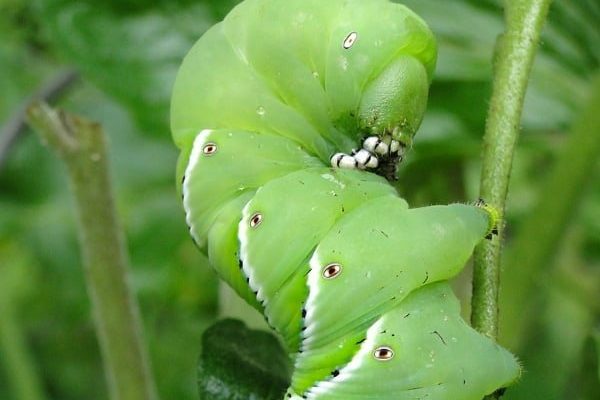
Preparing for hornworm season is like gearing up for a big game. You need the right strategies, tools, and knowledge to protect your garden. Just like you wouldn’t step onto the field without a game plan, you shouldn’t head into spring without knowing what to expect from these green giants. In this guide, we’ll explore how to identify hornworms, the damage they cause, and practical ways to manage them—all so you can enjoy your garden without fear of a hornworm takeover.
Understanding Hornworms: What Are They?
Hornworms are the larval stage of **sphinx moths**. As caterpillars, they can grow to be a whopping 4 inches long! Their green color helps them blend into the leaves, making them tricky to spot. Most commonly, you’ll encounter the **tomato hornworm**, which is infamous for feasting on tomatoes, peppers, and eggplants.
Here’s the thing: while they’re fascinating creatures, they can wreak havoc on your garden if left unchecked. They can strip a plant of foliage in just a few days, leading to stunted growth, decreased fruit production, and even plant death. For many gardeners, this makes **hornworm prevention** a top priority as soon as the weather starts to warm up.
You might be wondering how to tell them apart from other garden pests. Hornworms have a distinctive horn-like projection on their rear end, which is where they get their name. They also have white or yellow stripes along their sides. Being able to identify them early is crucial, so keep an eye out!
Timing Is Everything: When Does Hornworm Season Start?
Hornworm season varies depending on where you live, but it generally kicks off in late spring or early summer. In warmer climates, you might see them appearing as early as April, while cooler regions may not experience them until June. So, it’s a good idea to mark your calendar and start monitoring your plants as the temperatures rise.
The key to hornworm management is to stay ahead of the game. Regularly check your plants at least once a week. Look for signs of damage—like chewed leaves—and inspect the undersides of the leaves, where these sneaky caterpillars love to hide.
By understanding the timing of hornworm season in your area, you can better prepare your garden for battle. If you know when they typically show up, you can time your preventative measures effectively, reducing the chances of a full-blown invasion.
Preventative Measures: How to Keep Hornworms Away
Prevention is always better than cure, right? There are several effective strategies you can use to keep those hornworms at bay. Here are a few tried-and-true methods:
- Plant Rotation: Changing the location of your plants each season helps disrupt the life cycle of pests.
- Companion Planting: Some plants can repel hornworms. For example, marigolds can deter a variety of pests while attracting beneficial insects.
- Natural Predators: Encourage birds and beneficial insects like ladybugs in your garden to help control hornworm populations.
- Physical Barriers: Use row covers to protect your plants while allowing sunlight and moisture through.
Implementing these measures early can help you avoid a major hornworm headache down the road. You might not eliminate them entirely, but you can definitely keep their numbers manageable.
Spotting Hornworms: How to Identify Infestations Early
So, how do you know if hornworms have invaded your garden? Here are a few telltale signs to look out for:
1. **Chewed Leaves:** If you notice large holes in the leaves, that’s a major red flag. Hornworms are *voracious eaters*, often leaving behind skeletonized leaves.
2. **Excrement:** Look for small droppings that look like dark pellets beneath your plants. This is a sure sign that a hornworm is munching away.
3. **Signs of Stress:** Stunted growth or wilting could also indicate hornworm damage, especially if other pests aren’t present.
The earlier you catch hornworms in action, the better your chances of managing them without resorting to harsh chemicals.
Natural Solutions: How to Manage Hornworms Effectively
If you find yourself facing a hornworm infestation, don’t panic! There are several **natural methods** to help you manage these pests without harming your plants or the environment. Here’s what you can do:
– **Handpick Them:** Since hornworms are large and relatively easy to spot, handpicking them off your plants is one of the simplest solutions. Wear gloves, and drop them into a bucket of soapy water to kill them off.
– **Neem Oil:** This natural pesticide disrupts the hormonal balance of the caterpillars, making it more difficult for them to grow and reproduce. Mix it according to the package instructions and spray it on affected plants.
– **Beneficial Nematodes:** These microscopic worms attack and kill hornworm larvae in the soil. Just mix them with water and apply them to your garden.
By using these methods, you can effectively manage hornworm populations without toxic chemicals that could harm beneficial insects or the ecosystem.
When to Call in Reinforcements: Chemical Solutions
If your hornworm problem is severe and natural solutions aren’t cutting it, you might consider chemical pesticides. However, this should be a last resort. Many conventional options can harm not just the hornworms but other beneficial insects too.
If you decide to go this route, look for products specifically labeled for hornworms and follow all instructions carefully. Always make sure to apply them in the evening or early morning when beneficial insects are less active.
Consider using products that contain **Bacillus thuringiensis (Bt)**, a natural bacterium that targets caterpillars. This can be a safer option as it primarily affects caterpillars while leaving other insects unharmed.
Final Thoughts: Enjoy Your Summer Garden
Preparing for hornworm season might seem daunting, but with a little knowledge and proactive measures, you can protect your garden and enjoy a bountiful harvest. By understanding the life cycle of hornworms and implementing effective strategies, you’ll be well-equipped to tackle any unwanted invaders.
Remember, it’s all about getting ahead of the game. Keep your eyes peeled, check your plants regularly, and don’t hesitate to take action when you spot a hornworm. With the right approach, you can maintain a healthy, vibrant garden throughout the season! Happy gardening!

